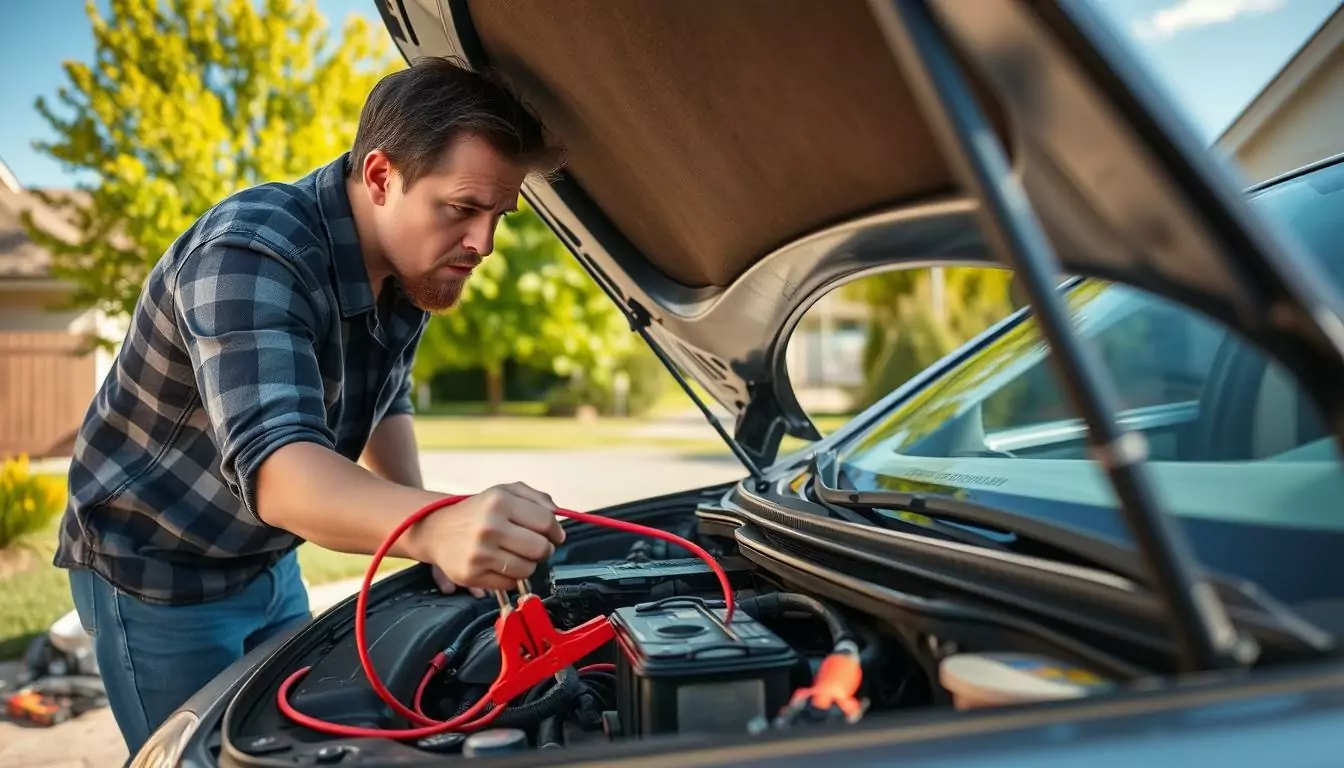Ever turned the key only to hear a faint click or silence? A dead battery can be frustrating. Jump-starting is often the solution, but what if it doesn’t work?
John, a mechanic from Midwest Auto Repair, once had a customer whose car wouldn’t start after multiple jumps. The battery was fine, but the car’s electrical system was faulty.
Understanding why jump starts fail can help you troubleshoot the issue. Let’s explore common reasons and solutions for this problem.
Key Takeaways
- A car not starting after a jump start could indicate issues beyond just a dead battery
- Common culprits include a faulty battery, corroded terminals, or issues with the jumper cables
- Troubleshooting steps like checking voltage and inspecting connections can help diagnose the problem
- In some cases, professional help from a mechanic may be needed to resolve more complex starting problems
- Roadside assistance services can provide support if you’re unable to get your car started
Common Reasons Your Car Won’t Start with a Jump

Jump-starting your car can be frustrating when it doesn’t work. Let’s explore the most common reasons behind this challenge. Understanding these issues is key to a successful jump-start.
Dead or Faulty Battery
A completely dead or faulty battery is often the culprit. If it can’t hold a charge, jump-starting won’t help. In this case, you’ll need to replace the battery.
Corroded Battery Terminals
Corrosion on battery terminals can block the electrical connection. This buildup prevents jumper cables from making proper contact. As a result, the jump-start becomes ineffective.
Faulty Jumper Cables
Damaged or improper jumper cables can cause failed jump-starts. Frayed cables or loose connections won’t transfer enough current. Using the wrong size for your vehicle’s system can also be problematic.
Knowing these reasons helps identify the root cause of jump-start issues. A thorough inspection is crucial before attempting further procedures. With this knowledge, you can take steps to get your car running again.
“A dead battery is one of the most frustrating reasons a car won’t start, but with the right knowledge and tools, you can overcome this obstacle and get back on the road.”
Troubleshooting Your Car Jump Start Issue

Is your car refusing to start after a jump? Let’s pinpoint the cause. It could be a dead battery, starter problems, or electrical system failure. We’ll explore steps to diagnose and fix these issues.
Check the Battery Voltage
Start by using a multimeter to check battery voltage. This helps determine if the battery holds enough charge. A fully charged battery should read 12.6 volts or higher when off.
If the voltage is low, the battery might be causing starter issues. It could also lead to electrical system failure.
Inspect the Connections
Examine the battery terminals and connections to the electrical system. Ensure terminals are clean and corrosion-free. Corrosion can block electricity flow, causing alternator problems.
Tighten any loose connections you find. Replace battery cables if they look worn or damaged.
Assess the Driver’s Side Power
Check the power supply on the driver’s side. Inspect fuses, relays, and wiring for issues. Address any problems you find, like blown fuses or damaged wiring.
These steps can help identify why your car won’t start after a jump. If problems persist, consider seeking help from a qualified mechanic.
| Troubleshooting Step | Description | Potential Causes |
|---|---|---|
| Check Battery Voltage | Use a multimeter to measure the battery voltage | Dead or faulty battery |
| Inspect Connections | Examine battery terminals and connections for corrosion or looseness | Corroded battery terminals, damaged cables |
| Assess Driver’s Side Power | Check fuses, relays, and wiring on the driver’s side of the vehicle | Electrical system failure, starter issues, alternator problems |
When to Call for Professional Help
Many car starting issues can be fixed on your own. But sometimes, you need a professional mechanic. If your efforts fail, it’s time to see an auto repair specialist.
Signs You Need a Mechanic
Clear signs for professional help include ongoing battery problems and unexplained electrical issues. If jump-starting fails or the battery drains quickly, a mechanic should inspect your car.
When you can’t find the cause of the starting problem, it’s best to seek expert help. A professional can diagnose and fix complex issues.
Options for Battery Replacement
A mechanic can help you choose and install a new battery if yours is dead. They’ll ensure it fits your car’s make and model. They can also check for issues that may have caused early battery failure.
Emergency Roadside Assistance Services
If you’re stranded with a car that won’t start, call emergency roadside assistance. They can send a technician to diagnose and possibly fix the problem on-site.
This service is valuable when you can’t fix the issue or reach a repair shop. It can save you time and stress in difficult situations.
